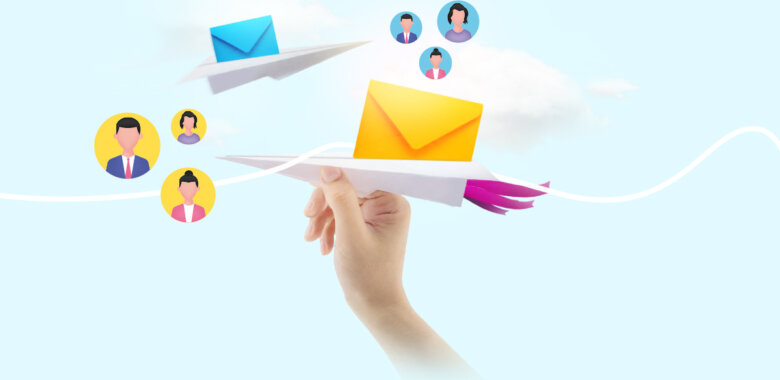ABM email marketing step-by-step
Below, we will walk you through the key steps you need to take to launch a solid ABM marketing campaign. To make it a bit easier to understand, we created an imaginary business owner who is in the same boat as you! His name is Josh, and he owns an online painting supplies store. He has just read up on ABM email marketing and wants to use it to increase his ROI. Where should he start?
Identify target accounts
The first step of creating an ABM-based email campaign is to identify target accounts. In other words, Josh needs to make a list of businesses or individuals he wants to focus on. He can do it based on their business needs, gender, interests, and job titles.
Since it was his first time launching such a campaign, he limited himself to a small chunk of accounts. Each one was a loyal customer who had already placed multiple orders. With a smaller number of people to focus on, he will be able to fine-tune his strategy and see what works best. Once he gets the hang of it, he can start targeting multiple groups at the same time.
Collect necessary data
Once Josh has compiled a list of potential target accounts, he has to get his hands on the data he needs to make his emails genuinely personalized. To put it another way, he has to determine what the pain points, preferences, and needs of specific customers are. He can do it in the following ways:
- He can send out a few surveys or questionnaires. There, he can include questions about their needs, preferences, and goals. Of course, not everyone is going to respond to his surveys. Nevertheless, he could encourage them to do so by offering them something in return, such as a discount or a freebie.
- He could gather customer data that is already out there. For example, he could check out his target customers’ social media accounts or read the reviews they have left on his website. Checking their purchase history is also a viable option.
As mentioned above, Josh wants to focus on long-time customers who have already placed multiple orders with his store. He decides to go through their purchase history. By doing so, he should be able to identify their favorite brands and product types.
Create personalized content
Now it’s time for Josh to start working on his email messages. He starts with the subject lines. He could address his target customers by name to connect with them on a more personal level.
When it comes to the body of his message, he focuses on the problems or preferences of his target customers. He has already checked the purchase history of one of his target accounts. He discovers that they have been purchasing paints and brushes manufactured by this one specific company.
It just so happens that he has recently started stocking up on their products, and most of them are on sale. He could make it the main focus of his message. While he is at it, he could mention that he has just what his customer needs and that he is offering it at an attractive price.
Test email messages
Now, Josh might decide to split-test his email messages. Doing so ensures that they are as effective at driving conversions as possible. A small part of his mailing list is going to receive a message with subject line number one, which contains an emoji.















